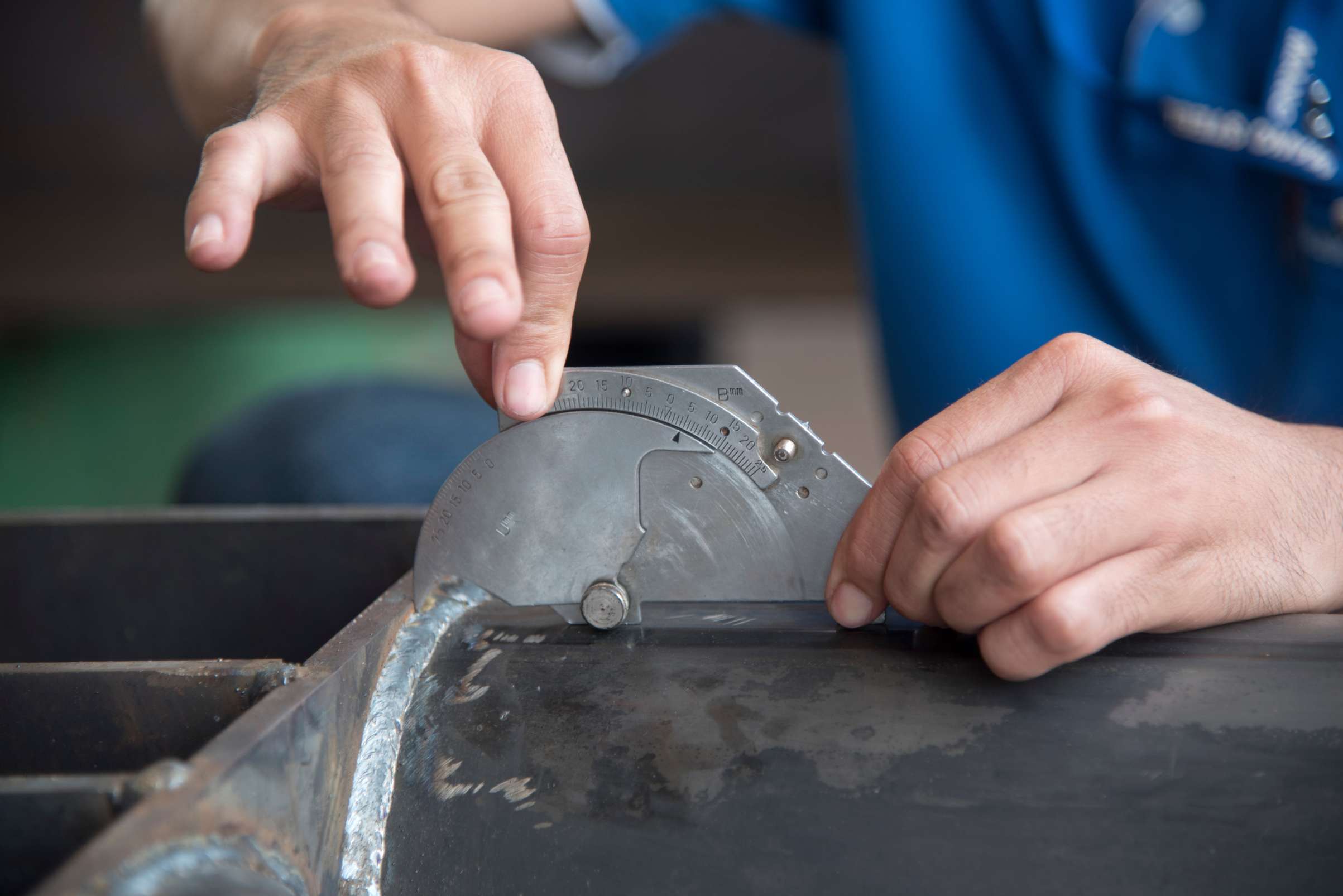Pipeline Welding Inspection: Important Actions for Reliable Pipeline Building
Pipeline Welding Inspection: Important Actions for Reliable Pipeline Building
Blog Article
Advanced Methods in Pipeline Welding Evaluation: Innovations and Technologies for Boosted Precision and Integrity in Weld Evaluation
The landscape of pipe welding examination is undergoing a substantial makeover, driven by innovative strategies that guarantee to improve both precision and dependability in weld assessments. Advancements such as automatic examination systems and advanced imaging innovations are redefining traditional techniques, while non-destructive testing methods make certain material integrity is preserved. As these technologies evolve, they not only boost issue discovery rates however also make it possible for much more efficient upkeep strategies. Nonetheless, the ramifications of these innovations prolong past instant advantages, raising important questions concerning future practices and criteria in the market.

Relevance of Weld Inspection
Ensuring the stability of pipe welds is critical to the general security and integrity of commercial systems. Rigorous assessment of welds is important to the lifecycle of pipeline framework.
The relevance of weld evaluation expands beyond mere compliance with regulative requirements. It serves as an aggressive action to identify and rectify flaws, such as incomplete combination, porosity, or fractures, before they escalate right into significant concerns. Reliable examination strategies additionally add to the longevity of pipes, lowering upkeep expenses and enhancing operational performance.
In addition, thorough weld assessments foster depend on among stakeholders, including regulatory bodies, capitalists, and the areas offered by these pipelines. By ensuring that all welds fulfill the needed requirements, organizations can mitigate dangers and promote their online reputations. In recap, weld evaluation is vital not just for operational honesty however also for the more comprehensive ramifications it holds for security and environmental stewardship.
Automated Inspection Equipments
The combination of automated assessment systems in pipeline welding has actually transformed the strategy to making sure weld quality and honesty. These systems employ innovative robotics and synthetic knowledge to carry out examinations that are not only much faster but likewise more constant than typical techniques. Automated systems can cover considerable lengths of pipelines successfully, capturing information that human inspectors may neglect because of tiredness or environmental problems.
Among the key advantages of automated inspection systems is their capacity to run in harmful environments, decreasing the danger to human examiners. They make use of various non-destructive testing (NDT) methods, such as ultrasonic screening and magnetic fragment inspection, to evaluate weld stability without endangering the framework. The information collected is processed in real-time, allowing for instant comments and timely rehabilitative activities when issues are determined.
Moreover, automated systems assist in the standardization of examination procedures, ensuring that each weld is evaluated against regular requirements. This not just boosts the integrity of outcomes however likewise enhances compliance with regulatory criteria. As markets remain to prioritize safety and operational performance, the duty of computerized examination systems in pipe welding will undoubtedly increase, leading the way for a lot more advanced quality control methodologies.
Advanced Imaging Technologies
Often employed in contemporary pipeline welding examinations, progressed imaging technologies have considerably enhanced the ability to detect and evaluate weld issues. Methods such as digital radiography, calculated tomography, and thermographic imaging give inspectors with high-resolution images that reveal sub-surface flaws and architectural incongruities that may be unseen to the nude eye.
Digital radiography utilizes digital sensors to capture images, permitting instant evaluation and boosted image contrast. This causes faster assessments and enhanced precision in identifying critical problems. Computed tomography, on the various other hand, provides three-dimensional imaging, enabling inspectors to imagine intricate geometries and examine the stability of welds from numerous angles - Pipeline Welding Inspection. This depth of analysis is important for identifying problems that conventional approaches may ignore.
Thermographic imaging utilizes infrared technology to spot variations in temperature level, identifying locations of possible weakness or stress and anxiety within the weld. These advanced imaging innovations not only boost problem detection rates yet additionally minimize the time and resources required for pipe inspections. Therefore, they play an important role in maintaining pipe safety and security and integrity, making sure compliance with market standards while reducing operational risks.
Non-Destructive Checking Techniques
Utilizing various strategies, non-destructive testing (NDT) methods are essential in pipe welding assessments, enabling the evaluation of weld honesty without jeopardizing the material's architectural integrity. NDT incorporates a variety of methods, consisting of ultrasonic testing (UT), radiographic screening (RT), magnetic particle screening (MT), and dye penetrant screening (PT) Each technique has distinctive benefits and applications depending on the details demands of the inspection.
Ultrasonic screening address utilizes high-frequency acoustic waves to spot inner problems, providing specific dimensions of weld thickness and honesty. Pipeline Welding Inspection. Radiographic screening employs X-rays or gamma rays to generate pictures of the weld, disclosing inner defects that may not be noticeable externally. Magnetic particle testing works for like it spotting surface area and near-surface suspensions in ferromagnetic products, while color penetrant testing highlights surface splits by using a tinted dye
Integrating these NDT methods into pipe welding evaluations boosts the accuracy and reliability of weld analyses, making sure that possible failings are identified early. As markets require greater criteria for safety and performance, the role of NDT in preserving the stability of bonded structures remains to be essential in pipe building and construction and maintenance.

Future Fads in Weld Assessment
As we look to the future of weld analysis, innovations in modern technology are positioned to reinvent the methods employed for reviewing pipeline honesty. The combination of man-made intelligence (AI) and artificial intelligence in evaluation processes is anticipated to improve the accuracy of imperfection detection and predictive upkeep. These modern technologies permit for real-time data evaluation, allowing examiners to determine potential problems prior to they escalate into substantial problems.
Furthermore, making use of drones geared up with find innovative imaging systems is gaining traction. These airborne inspections can cover vast locations promptly, capturing high-resolution pictures and information that can be assessed for defects in hard-to-reach locations. This not only enhances safety and security but likewise boosts performance in the evaluation process.
In addition, the growth of smart sensors embedded in pipe systems supplies the possibility for continual monitoring. These sensors can discover modifications in pressure, temperature, and vibrations, providing valuable insights right into the wellness of the welds gradually.

Final Thought
To conclude, the combination of advanced strategies in pipe welding assessment dramatically improves the accuracy and integrity of weld evaluations. Developments such as automated inspection systems, progressed imaging innovations, and non-destructive testing approaches play a critical duty in boosting issue detection rates and cultivating aggressive maintenance strategies. As these modern technologies remain to develop, they will certainly additionally ensure the safety and security and effectiveness of pipe systems, eventually contributing to the integrity of essential infrastructure.

Report this page